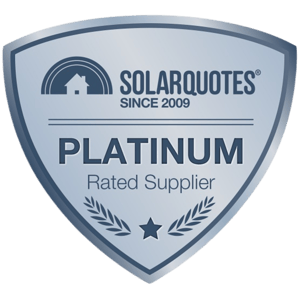Solar Energy for Beginners: A Simple Guide to Getting Started


In the heart of Australia's sun-drenched landscape, solar energy emerges as a beacon of sustainability and cost-efficiency for homeowners. This clean energy solution, powered by the sun's endless rays, stands at the forefront of an eco-friendly revolution, redefining residential energy consumption. With the urgency of environmental conservation and the allure of reduced utility bills, understanding solar energy's basics becomes indispensable for those considering a greener alternative.
What is Solar Energy?
Solar energy represents the pinnacle of harnessing the sun's power, transforming sunlight into electricity through two primary methods: photovoltaics (PV) and concentrated solar power (CSP). This renewable energy source plays a critical role in curbing carbon emissions and slashing our reliance on fossil fuels. Its adoption is a step toward a sustainable future, mitigating the impacts of climate change.
Benefits in Australia
Australia's unique geographical position, bathed in abundant sunshine, creates an ideal setting for solar power generation. Homeowners stand to gain substantially, with benefits including slashed electricity bills, enhanced property value, and a significant contribution to environmental preservation. The nation's solar-friendly climate is not just a matter of convenience but a call to action for sustainable living.
The Basics of Solar Power Systems
For those new to the solar energy journey, grasping the fundamentals of solar power systems is essential. These systems are marvels of engineering, designed to convert sunlight into electrical power with remarkable efficiency.
Components of Solar Systems
A typical solar power setup comprises several key components: solar panels, an inverter, battery storage, and a monitoring system. Each element plays a pivotal role in the seamless conversion of solar energy into electricity, ensuring that homes are powered sustainably and efficiently.
How Solar Power Works
The process begins with solar panels capturing sunlight and converting it into direct current (DC) electricity. The inverter then transforms this DC into alternating current (AC), the form of electricity used to power homes. Surplus energy can either be stored in batteries for later use or fed back into the grid, often yielding credits on electricity bills.
Evaluating Solar Potential
Before taking the leap into solar, assessing your home's solar potential is a step you cannot skip. This evaluation ensures that your investment is not only wise but tailored to your specific needs.
Assessing Your Location
Key factors such as roof space, orientation, and potential shading must be considered. In Australia, north-facing roofs are prime real estate for solar panels, capturing maximum sunlight throughout the year.
Sunlight Availability in Australia
Australia's generous sunlight hours make it a veritable goldmine for solar energy production. Understanding the sunlight patterns specific to your region can significantly enhance the efficiency of your solar panel installation.
Types of Solar Energy Systems
Solar energy systems come in two main varieties, each suited to different residential needs and circumstances.
Grid-Connected Systems
Connected to the national electricity grid, these systems allow homeowners to feed excess energy back, often receiving a credit. This setup is ideal for those looking to reduce their energy bills while staying connected to the grid.
Standalone Systems
For those in remote locations or preferring complete independence from the grid, standalone or off-grid systems are the answer. These systems require battery storage to ensure a continuous power supply, regardless of sunlight availability.
Financial Considerations
The decision to go solar is as much a financial consideration as it is environmental.
Costs and Savings
Though the initial setup cost can be substantial, the long-term savings on energy bills and the added value to your property make solar systems a sound investment.
Government Incentives in Australia
To encourage the adoption of solar energy, the Australian government offers various incentives, including rebates and feed-in tariffs, reducing the financial burden on homeowners.
Choosing the Right Solar Panels
The efficiency of your solar system hinges on selecting the appropriate solar panels.
Panel Types and Efficiency
Solar panels come in different types, such as monocrystalline and polycrystalline, each with its efficiency levels. Choosing the right type depends on your energy needs and budget considerations.
Size and Placement
The efficiency of solar panels is also influenced by their size and placement. Professional assessment is recommended to ensure optimal installation, maximizing energy production.
Installation Process
The installation of solar panels is a critical process that should ideally be entrusted to professionals.
Professional vs. DIY Installation
Though the DIY route may seem appealing for its cost-saving potential, professional installation guarantees safety, efficiency, and regulatory compliance, safeguarding your investment.
Permits and Regulations
Navigating local regulations and obtaining the necessary permits is a crucial step in the installation process, ensuring that your solar system is legally compliant and operationally safe.
Maintenance and Care
The longevity and efficiency of your solar system depend on regular maintenance and care.
Regular Maintenance Tips
Routine cleaning of solar panels and system check-ups are vital for optimal performance, ensuring that your system operates at peak efficiency year-round.
Troubleshooting Common Issues
Being familiar with common issues and their solutions, or consulting a professional when necessary, can help maintain your system's performance and longevity.
Environmental Impact
The environmental benefits of solar energy cannot be overstated.
Reduction in Carbon Footprint
By switching to solar, homeowners can significantly reduce their reliance on fossil fuels, leading to a substantial decrease in greenhouse gas emissions.
Sustainable Living
Solar energy is at the heart of sustainable living, offering a clean, renewable energy source that minimizes environmental impact and promotes a healthier planet.
Future of Solar Energy in Australia
The landscape of solar energy in Australia is rapidly evolving, promising an even brighter future.
Trends and Developments
Ongoing technological advancements are making solar energy more efficient and affordable, paving the way for wider adoption and innovative applications.
Community Solar Projects
For those unable to install individual solar systems, community solar projects offer a shared solution, democratizing access to clean energy.
Case Studies
Real-life success stories of residential solar energy adoption underscore the tangible benefits of going solar, from environmental impact to financial savings.
Overcoming Common Concerns
Addressing common concerns and misconceptions is key to making an informed decision about solar energy.
Reliability and Weather Factors
Solar systems have proven highly reliable, even in varying weather conditions. Battery storage ensures a continuous power supply, mitigating concerns about cloudy days or nighttime usage.
Resale Value of Property
Properties equipped with solar systems often enjoy a higher resale value, making solar investment not just environmentally sound but financially wise.
Maximising Solar Energy Efficiency
Maximizing the efficiency of your solar system is crucial for achieving the best return on investment.
Smart Usage Tips
Adopting energy-efficient practices can enhance the benefits of solar energy, reducing overall consumption and maximizing savings.
Complementary Technologies
Pairing solar energy with other green technologies, such as solar water heaters, can lead to further reductions in energy bills, amplifying the benefits of your solar investment.
Myths vs Facts
Dispelling myths and understanding the facts about solar energy are essential for a balanced perspective.
Debunking Solar Myths
Common misconceptions about solar energy often deter potential adopters. Clarifying these myths is crucial for accurate understanding and informed decision-making.
Real Facts about Solar Energy
Grasping the true benefits and limitations of solar energy allows homeowners to fully appreciate its potential and make choices that align with their values and needs.
How to Get Started
Embarking on your solar journey requires a step-by-step approach, from initial evaluation to installation and beyond.
Step-by-Step Guide
A methodical guide, from assessing solar potential to installation and maintenance, provides a clear pathway for those new to solar energy.
Consulting with Solar Providers
Engaging with professional solar providers offers customized solutions and expert advice, ensuring that your solar system meets your specific needs.
Safety and Compliance
Safety and legal compliance are paramount in the installation and operation of solar systems.
Safety Standards
Adhering to Australian safety standards is non-negotiable, guaranteeing that solar installations are safe and effective.
Compliance with Australian Laws
Familiarity with and adherence to local laws and regulations ensure that solar installations are legally compliant and operationally secure.
FAQs
Addressing frequently asked questions about solar energy helps demystify the process and empowers homeowners with the knowledge needed to embark on their solar journey confidently.
Conclusion
Solar energy stands as a testament to sustainable, cost-effective, and environmentally friendly residential energy solutions in Australia. By embracing solar power, homeowners not only contribute to a greener future but also enjoy significant savings and enhanced property value. The journey to solar adoption is paved with informed decisions, technological advancements, and a commitment to sustainable living, promising a brighter future for all.
%20(1).png?width=265&height=96&name=www.smartenergyanswers.com.auhs-fshubfsSmart%20Energy%20Answers%20Logo%20(HIRES)%20(1).png)

.png?width=514&height=121&name=Tesla%20Powerwall%203%20(new).png)







